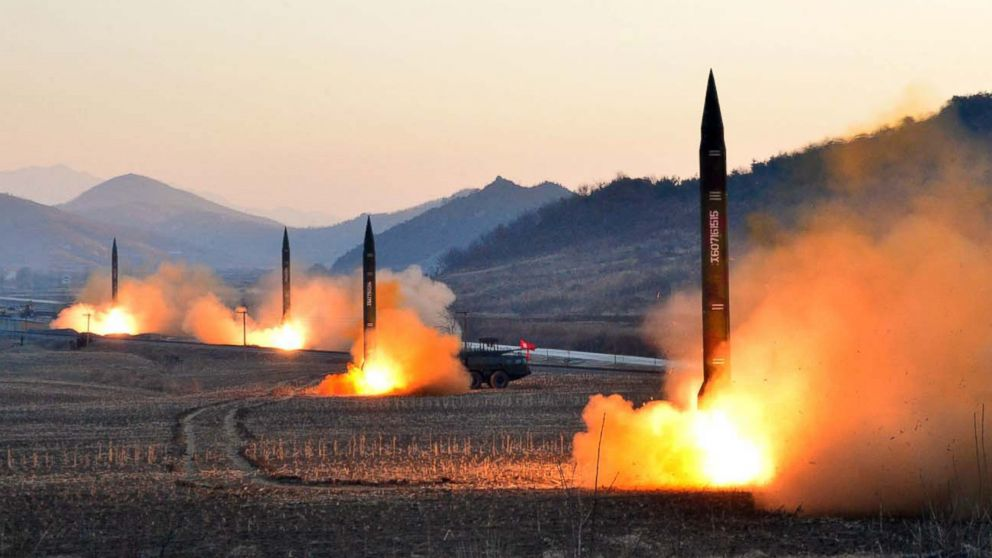The world is once again on edge as North Korea launches multiple short-range missiles just days after the United States and South Korea began their annual military drills. This latest provocation from the isolated nation is raising concerns about the stability of the region and the potential for conflict. With tensions already high between North Korea and the US, this missile launch is sure to escalate the situation even further. The implications of this development are significant, not just for the Korean Peninsula but for the entire world
According to the Associated Press, the country launched a suspected missile toward the sea on Sunday, which was verified by neighboring nations. The Japanese Defense Ministry and coast guard acknowledged on Sunday morning that a missile was fired from North Korea, but no additional information was provided.
Table of Contents

North Korea’s history with missile testing and nuclear programs
Democratic People’s Republic of Korea has a lengthy history of missile testing and nuclear projects, with its first successful nuclear test taking place in 2006. Despite international sanctions and pressure, North Korea has continued to enhance its nuclear and missile capabilities. The nation conducted its sixth and most powerful nuclear test to date in 2017, and has since proceeded to test missiles. North Korea’s missile program is viewed as a significant danger to regional and global security, with the country building intercontinental ballistic missiles (ICBMs) capable of reaching the US mainland.

North Korea launches weapons tests during US-South Korean drills
According to South Korean and Japanese estimates, the missile fired from the North’s northern Tongchangri region traveled across the nation before landing in waters off the country’s east coast. They said the missile flew 800 kilometers (500 miles), implying that the weapon might hit South Korea.
The South Korean military has described the North’s repeated ballistic missile launches as a “grave provocation” that threatens peace on the Korean Peninsula. It stated that it will continue with scheduled joint drills with the US and will respond “overwhelmingly” to any provocation by North Korea.
According to Japanese Deputy Defense Minister Toshiro Ino, the missile fell outside Japan’s exclusive economic zone, and there were no reports of damage to boats or planes in the vicinity. He described the launch as a “threat” to the security of Japan, the region, and the international community that “absolutely must be permitted.”
According to him, the missile’s trajectory was most likely erratic. This might be a reference to North Korea’s highly agile, nuclear-capable KN-23 missile, which was modeled after Russia’s Iskander missile.
The launch marked the North’s third round of missile tests since the United States and South Korea began joint military exercises last Monday.
The most recent US-South Korean exercises, which involve computer simulations and field exercises, are scheduled to take place until Thursday. Since 2018, the field exercises have been the largest of their kind.
North Korea just blast-off its longest-range Hwasong-17 intercontinental ballistic missile, which is aimed at targeting the US mainland. According to North Korean official media, the missile launch was intended to “strike dread into the adversaries.”
According to South Korean media sources, the US and South Korea want to conduct additional training using a US aircraft carrier when their current drills conclude later this month. This means that tensions on the Korean Peninsula may persist for a few more weeks, as North Korea is expected to respond to the drills with missile tests.
According to the US Indo-Pacific Command, the new launch poses no imminent danger to US territory or its allies. Nonetheless, it stated that the North’s latest launches illustrate “the destabilizing consequences of its illicit” weapons programs













